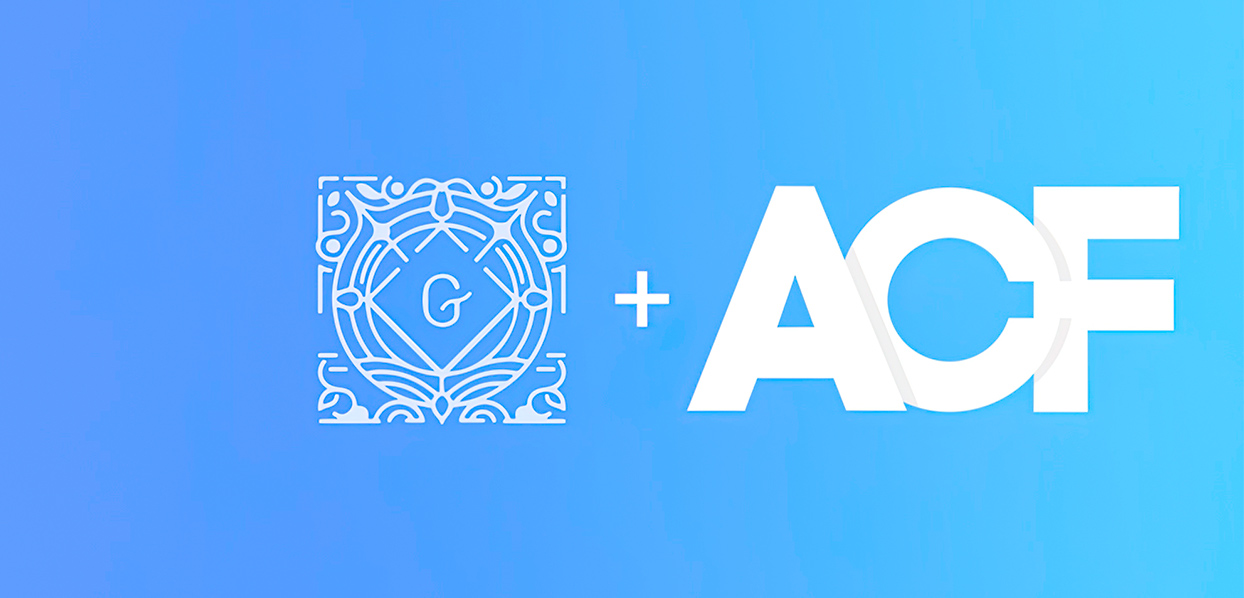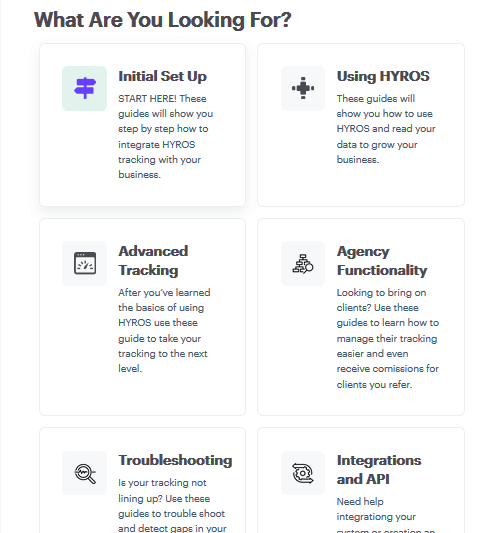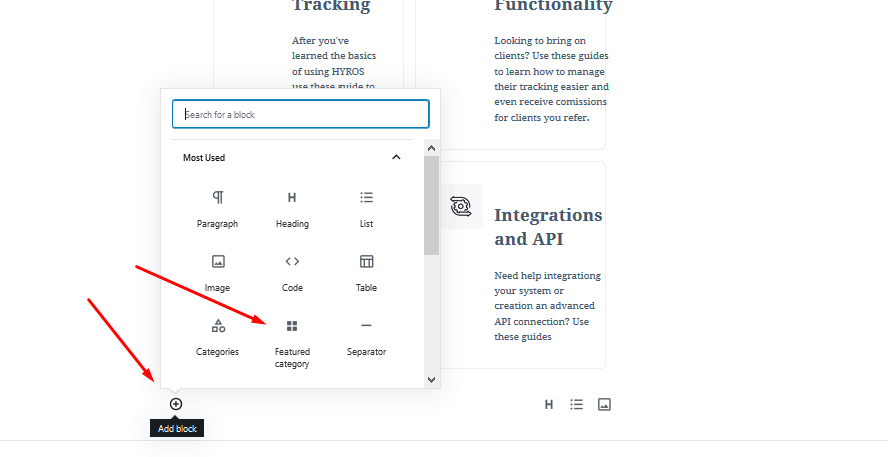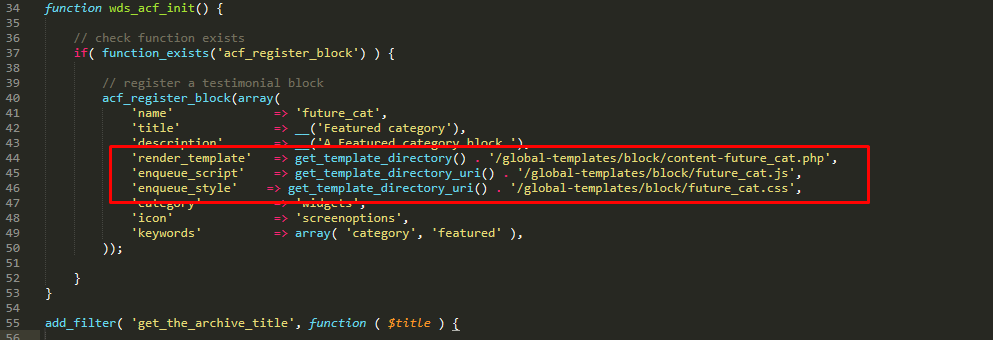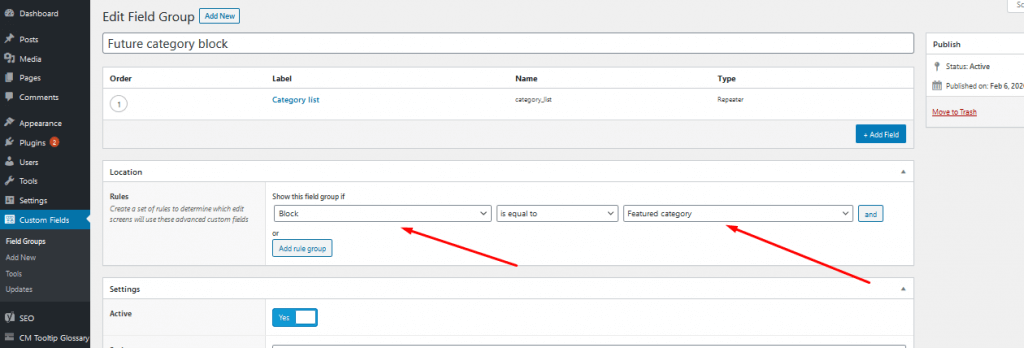Gutenberg is a new WordPress editor for posts and pages, built on the principles of builders, allows you to write custom page builder elements.
Using the ACF plugin, you can very simply make a widget of any type. And here we’ll show how.
For example, it was necessary to develop a block of selected categories.
The client wanted to be able to change icons, text, title and link, insert this block on any page or post, without reference to templates or post-types, in any part of the content part of the page.
This is how the widget looks in the admin panel in a visual format
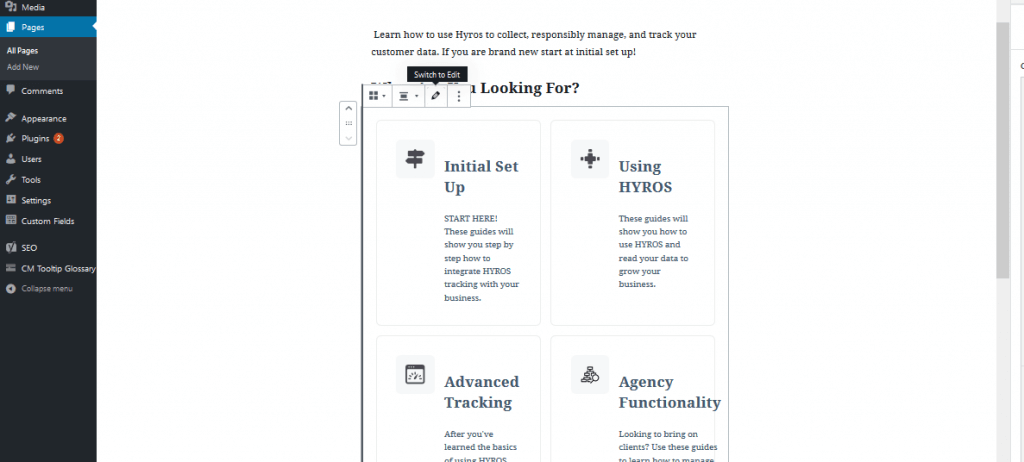
as well as in edit mode
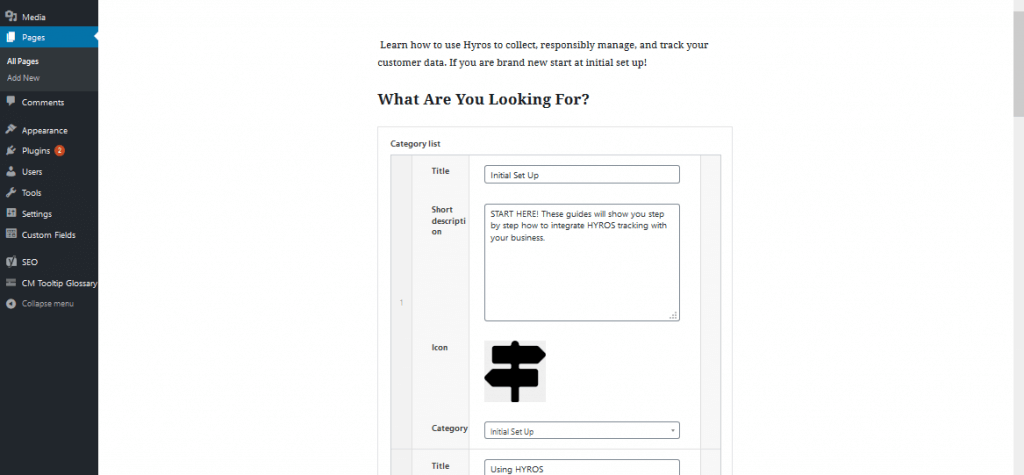
This block is added to the page using a custom widget built on the basis of ACF plugin.
To create a block, first we need to register it in functions.php
add_action('acf/init', 'wds_acf_init');
function wds_acf_init() {
// check function exists
if( function_exists('acf_register_block') ) {
// register a testimonial block
acf_register_block(array(
'name' => 'future_cat',
'title' => __('Featured category'),
'description' => __('A Featured category block.'),
'render_template' => get_template_directory() . '/global-templates/block/content-future_cat.php',
'enqueue_script' => get_template_directory_uri() . '/global-templates/block/future_cat.js',
'enqueue_style' => get_template_directory_uri() . '/global-templates/block/future_cat.css',
'category' => 'widgets',
'icon' => 'screenoptions',
'keywords' => array( 'category', 'featured' ),
));
}
}
Here we register the block, its files styles and scripts, as well as a template for output.
Indicate in which category to display it
and icon’s code from Dashicons(is the official icon font of the WordPress admin)
After that, in the ACF plugin, create a new group of fields, to which we connect the registered before block.
Fill it with the necessary fields.
Next, in the PHP template file, display the contents of the block with a standard ACF loop.
<?php
/**
* Block Name: Future category
*
* This is the template that displays the testimonial block.
*/
// check if the repeater field has rows of data
if( have_rows('category_list') ):
?>
<div class="flex flex--wrap waffle waffle--large">
<?php
// loop through the rows of data
while ( have_rows('category_list') ) : the_row();
?>
<div class="flex__column flex__column--6 flex">
<div class="media-thumbnail">
<a class="media-thumbnail__inner flex flex--stack flex--queue@xlarge waffle waffle--large" href="<?php echo
get_category_link(get_sub_field('block_item')); ?>">
<span class="flex__column flex__column--shrink">
<span class="media-thumbnail__icon"><?php echo file_get_contents(get_sub_field('taxonomy_icon')); ?></span>
</span>
<div class="media-thumbnail__body flex__column">
<h3 class="media-thumbnail__heading"><?php the_sub_field('block_title'); ?></h3>
<div class="media-thumbnail__content">
<?php the_sub_field('short_description'); ?>
</div>
</div>
</a>
</div>
</div>
<?php
endwhile;
?>
</div>
<?php
endif;
?>
If necessary, write styles and scripts in previously connected files.
That’s all, building blocks is pretty simple process, it’s convenient to use, and they are isolated and will always look equally good in any part of the content of a page or post.
And here in the ACF documentation, you can read more details if you need, on how the plugin works with the editor.

Get a Custom Solution with Web Design Sun
At Web Design Sun, we specialize in building web applications for clients in every business and industry. If you’re interested in custom applications for your business, contact us today.
Contact us today to get started

